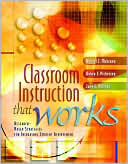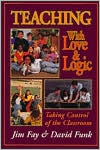Intelligence and How to Get It: Why Schools and Cultures Count
“[Nisbett] weighs in forcefully and articulately . . . [using] a thoroughly appealing style to engage . . . throughout.”—Publishers Weekly\ Who are smarter, Asians or Westerners? Are there genetic explanations for group differences in test scores? From the damning research of The Bell Curve to the more recent controversy surrounding geneticist James Watson’s statements, one factor has been consistently left out of the equation: culture. In the tradition of Stephen Jay Gould’s The Mismeasure...
Search in google:
“[Nisbett] weighs in forcefully and articulately . . . [using] a thoroughly appealing style to engage . . . throughout.”—Publishers Weekly The New York Times - Jim Holt In Intelligence and How to Get It, [Nisbett] offers a meticulous and eye-opening critique of hereditarianism. True to its self-helplike title, the book does contain a few tips on how to boost your child's I.Q.…But its real value lies in Nisbett's forceful marshaling of the evidence, much of it recent, favoring what he calls "the new environmentalism," which stresses the importance of nonhereditary factors in determining I.Q. So fascinating is this evidence—drawn from neuroscience and genetics, as well as from studies of educational interventions and parenting styles—that the author's slightly academic prose style can be forgiven.
1 Varieties of Intelligence 12 Heritability and Mutability 213 Getting Smarter 394 Improving the Schools 575 Social Class and Cognitive Culture 786 IQ in Black and White 937 Mind the Gap 1198 Advantage Asia? 1539 People of the Book 17110 Raising Your Child's Intelligence ... and Your Own 182Epilogue: What We Now Know about Intelligence and Academic Achievement 193App. A Informal Definitions of Statistical Terms 201App. B The Case for a Purely Environmental Basis for Black/White Differences in IQ 209Notes 237References 257Credits 283Index 285
\ From Barnes & NobleThat genetics determines intelligence has become a mantra for millions of Americans. Social psychologist Richard E. Nisbett, however, refuses to accept what he regards as a simplistic explanation for a much more complex reality. In Intelligence and How to Get It, he shows how narrow genetic explanations ignore the dominant shaping forces of culture, economics, and education. His refutation of arguments that intellect is essentially an accident of birth will provide encouragement for educators, parents, and citizens dedicated to social reform.\ \ \ \ \ Chronicle Review“Nisbett argues that a variety of social, cultural, and economic factors can significantly affect a child’s IQ, and suggests ways to improve intelligence scores, as well as grades, by manipulating those factors.”\ \ \ Daniel Osherson“A hugely important analysis of the determinants of IQ. . . . A ‘must-read.’”\ \ \ \ \ Jim HoltIn Intelligence and How to Get It, [Nisbett] offers a meticulous and eye-opening critique of hereditarianism. True to its self-helplike title, the book does contain a few tips on how to boost your child's I.Q.…But its real value lies in Nisbett's forceful marshaling of the evidence, much of it recent, favoring what he calls "the new environmentalism," which stresses the importance of nonhereditary factors in determining I.Q. So fascinating is this evidence—drawn from neuroscience and genetics, as well as from studies of educational interventions and parenting styles—that the author's slightly academic prose style can be forgiven.\ —The New York Times\ \ \ \ \ Publishers WeeklyWhether intelligence is largely determined by genetics or environment has long been hotly contested. Nisbett, a University of Michigan psychology professor, weighs in forcefully and articulately, claiming that environmental conditions almost completely overwhelm the impact of genes. He comes to this conclusion through a careful statistical analysis of a large number of studies and also demonstrates how environment can influence not only IQ measures but actual achievement of both students and adults. (People often "overachieve" when appropriate incentives are in place, Nisbett argues.) Nisbett builds a very strong case that measured IQ differences across racial, cultural and socioeconomic boundaries can easily be explained without resorting to hereditary factors. The result is a very positive message: schools, parents and government programs can have a huge impact if they take the right, which are not necessarily the most expensive, steps. Without those steps, he says, the current role of socioeconomic factors is frightening, with economically disadvantaged children largely condemned to failure. Although Nisbett relies heavily on statistics to document his claims, he does so in a manner accessible to general readers and uses a thoroughly appealing style to engage them throughout. (Feb.)\ Copyright © Reed Business Information, a division of Reed Elsevier Inc. All rights reserved.\ \








